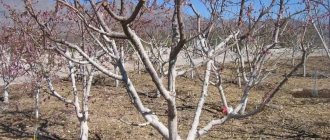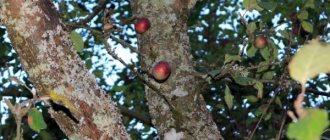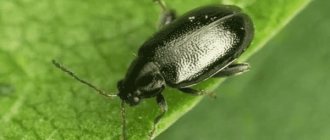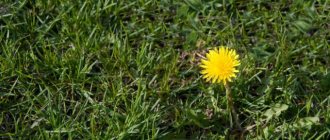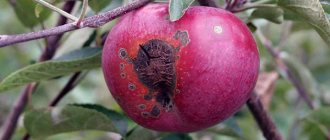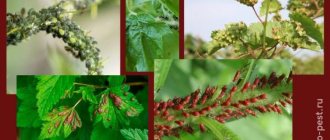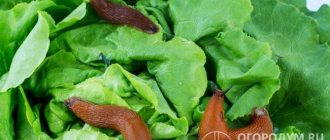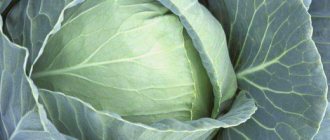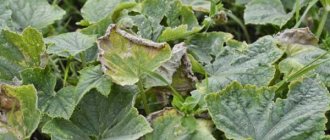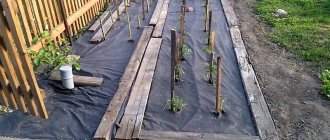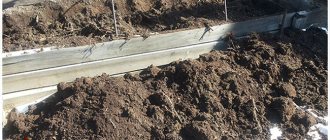The appearance of leaves rolled into a tube on an apple tree indicates an invasion of the tree by the leaf roller - dangerous pest, capable of destroying not only foliage, but also fruits. Massive infection of fruit trees is fraught with crop loss.
Is it possible to fight the leaf roller on an apple tree with folk remedies? There are many effective means to get rid of the pest in a short time.
Description of the leaf roller
This butterfly resembles a moth in appearance - it is the same in size, and its wingspan reaches 2.5 cm
. Their body is thick, a large number of hairs grow throughout the body, and the wings are folded on the back in a horizontal position.
And the caterpillars of this pest have practically no hairs on their body, their body length is about 2 cm, on which there are 8 pairs of legs, the color of the body of a young leaf roller is yellow or light green, the color of the head is black.
On the abdominal rings of these caterpillars there is a belt with hooks. It is the leaf roller larvae that cause the most damage to cultivated plants in the garden.
Photo of leaf roller
Only two representatives of this family live in the garden and vegetable garden - codling moths, which feed on the vegetative part of garden plants, and shoot moths, which eat the buds or branches of coniferous plants. Other types of leaf rollers are omnivorous and can devour the entire plant, including its root system.
Particular attention should be paid to codling moths. This “harmful” bug is a real scourge of garden crops, as it feeds on the cell sap of their foliage. The codling moth hides in the leaves, rolls them into tubes, and pulls them into bundles with a cobweb.
This article will talk about leaf rollers that attack various fruit trees in the garden, how to deal with “harmful” bugs, including folk remedies, as well as about preventing the appearance of these pests in the garden.
Signs of defeat
The leaf roller is a small butterfly, about 3 cm long, looks like a moth, has a gray color and a hairy body. Leaf roller babies are smooth yellow-green caterpillars, no more than 2 cm long, have 8 pairs of legs and a dark head.
It is worth noting! It is the caterpillars that cause the damage. They cause the greatest damage to young plantings. The caterpillars eat away most of the leaf blade, which slows down the process of photosynthesis, and subsequently the development of the plant as a whole.
The ability to mate appears just 3 days after emerging from the pupa. Each butterfly lays up to 150 eggs in a clutch.
Leaf roller on an apple tree
It is important to know! Clutches are formed separately in different parts of the plant: in a crevice in the bark, at the junction of the shoot with the trunk, in flowers and fruits.
In just 15 days, caterpillars will appear from these clutches, which will instantly crawl throughout the entire tree and begin to destroy it. Thus, due to the very short development period, several generations of the leaf roller appear in one season. In September, preparations for winter begin; the leaf roller weaves a cocoon from a web. And in the spring, when the first greenery blooms, the caterpillars emerge from this cocoon and begin their life cycle again.
Signs of damage vary depending on the period:
- Early to mid-spring - cobwebs on flowers and leaves, as well as eaten petals and leaf blades;
- Late spring-early summer - the leaves curl, and cocoons are visible on the veins and on the fruits;
- Mid and late summer - thick white cobwebs with a silvery tint on young branches, butterflies begin to fly actively;
- Late summer-early autumn – dark areas are noticeable on the leaves. These are ovipositions covered with a damp coating from insect secretions;
- Mid-autumn - a large number of curled leaves and cobwebbed apples.
Damage to leaves
How to deal with pests on the site
Methods to combat leafworm
You can fight this “harmful” insect using the following methods:
- mechanical;
- chemical;
- biological.
Mechanical methods of combating the leaf roller mean the direct destruction of caterpillars - shaking them off the branches, removing leaves with insects and burning. Also, various traps and catching belts are installed on trees, into which leaf rollers and other insect pests are collected and then destroyed. All mechanical means are safe for plants, humans, and warm-blooded animals.
In the photo there is a leaf roller caterpillar:
Biological pest control
-
this is the attraction of their natural opponents to destroy leaf rollers.
Birds help people fight the leaf roller. But the most effective in the fight against “harmful” bugs are insecticidal preparations. The main disadvantages of such products are that insects quickly get used to the drugs, so they have to be changed, and also that these substances accumulate in fruits and soil.
Therefore, insecticides are used only when the number of leaf rollers on trees is large and they cannot be dealt with using less radical methods.
Pests in the garden!
How to get rid of wireworms How to deal with mole crickets in the garden and in the garden How to deal with cutworms
If this pest is noticed on at least one tree in the garden, it is necessary to simultaneously treat the entire garden plot, since the leaf roller can quickly move from one crop to another if treated only the affected tree. It is also recommended to carry out periodic preventive spraying against this “harmful” bug to prevent its appearance in the garden.
It is easiest to deal with caterpillars, but a leaf roller wrapped in a leaf cannot be destroyed with insecticides, since they will not get inside such a kind of “cocoon”. Therefore, all affected foliage has to be collected from plants by hand and burned.
Advice!
Birds, especially titmice, which quickly pick butterflies or caterpillars from tree branches, will be good helpers in the fight against this insect. In order for these birds to settle in the garden, it is worth hanging unsalted lard and seeds on the trees.
Life cycle
The beginning of the spring summer of insects depends on heat, humidity and light. This process is extended and takes 20–30 days. Butterflies fly in the morning and evening; on cloudy days, activity begins at dawn.
At the same time, insects mate. After fertilization, females immediately lay eggs. Fertility in females varies and depends on the species. Some leafrollers lay several dozen eggs, while others are capable of laying thousands.
Females place eggs in the axils of leaves and branches, under the bark, on branches, shoots and ovaries . The caterpillars, hatched after 14 days, look for convenient feeding places. First instar larvae damage young leaves at the tops of shoots, buds, and opening buds. Older caterpillars feed mainly on leaves. They twist the leaves into tubes and lumps, entwining them with cobwebs .
Before turning into a butterfly, caterpillars enter the pupal stage. This process takes 2 weeks. Butterflies emerging from the cocoon immediately adapt to the environment and are ready to produce new offspring.
The caterpillars, which appear at the end of summer, overwinter in a dense cocoon. In early spring they wake up, continue to feed and develop.
A peculiarity of leaf rollers is that they overwinter at different stages of development. Eggs, caterpillars of all ages, pupae and adults enter a dormant state (diapause). Leaf rollers are not afraid of low temperatures; when at rest, they successfully overwinter in shelter : under the bark of trees, in the soil, under thick snow, under the remains of leaves and grass. Therefore, frosts down to -40°C do not seriously affect their numbers.
In the middle zone and northern regions, the insect produces 1–2 generations per season; in the south it reproduces 3–4 times a year.
Anti-leafworm medications
Systemic or contact insecticides can be used to control budworms. The contact form of these pesticides is less toxic to plants and humans, but is not always effective in controlling pests.
Systemic substances are more aggressive, can accumulate in the green mass and fruits of fruit trees, negatively affect the human body and warm-blooded animals, but quickly cope with leaf rollers and other insect pests. And the cost of such chemicals is quite high.
For preventive treatment and for minor damage to the garden by leaf rollers, the following insecticides can be used:
- Alatar
is an insecticidal preparation with universal action. To treat trees against leaf roller, 5 ml of the drug is dissolved in a bucket of water and treated from a sprayer; - Fufanon - a drug with a wide range of effects on pests or Karbofos is diluted as follows: 15 ml of the substance must be dissolved in 15 liters of water, if necessary, the dose of the product is doubled;
- insecticide and acaricide Dursban
, which must be diluted as follows - 40 ml of insecticidal preparation in a bucket of liquid; - insecticides with a wide spectrum of effects Atom, Desant and analogues
- 5 ml per 5 liters of liquid; - broad-spectrum insecticide Aktaru
- 8 ml per bucket of liquid; - Actellik
insectoacaricidal drug for intestinal contact action - 10 ml per bucket of liquid.
The following biological products can be used against leaf roller caterpillars:
- Dendrobacillin;
- Lepodocid;
- Bitoxibacillin.
This “harmful” bug may not die after one treatment, so usually up to 4 sprayings are carried out, and the interval between them is up to one week.
It happens that there are too many leaf roller pests on trees, so more effective pesticides have to be used.
Leaf roller larvae that hide in the foliage should be destroyed with synthetic pyrethroids:
- Ivanhoe;
- Alphacin;
- Fatrin;
- Fastak;
- Chord.
BIOLOGICAL!
Trichodermin
These drugs should be diluted and used in strict accordance with the instructions for use.
Particular attention should be paid to the air temperature - such drugs are not effective at 24 degrees Celsius and above.
Important!
Such drugs are highly toxic to the environment, humans and animals. Therefore, treatment with drugs of synthetic origin should be carried out in personal protective equipment. And pyrethroids are used only if less toxic drugs have not helped in the fight against leaf rollers.
When to spray apple trees.
It is very important to know when to apply insecticides in order to minimize the risk of the drugs affecting the future harvest.
Inspect the trees in the spring, before they begin to wake up and the buds begin to bloom. If you detect the presence of pests (laying eggs), then the first treatment should be carried out as soon as the buds of the apple tree begin to turn pink.
If you notice light cocoons of caterpillars, then spraying the apple tree will need to be done at the moment when the “green cone phase” begins. This period passes quickly: the bud has burst and released the tip of the leaf - it is at this moment that the treatment must be carried out. If you have time, you will be able to destroy all the pests, which will allow the apple tree to bloom and set fruit. By this time, new butterflies may appear, so you should inspect your trees regularly to watch out for pests.
Never spray with insecticides during the flowering period, as all these drugs pose a danger to beneficial insects. Spraying should always be carried out in cloudy, dry and windless weather.
Folk remedies against leaf rollers
If leaf rollers have just appeared on fruit trees in the garden, and their number is not yet so large, then it is better to try to cope with them without the help of insecticidal preparations.
How to deal with leaf rollers using folk and traditional methods - video
The most effective folk remedies for leaf rollers are:
- Wormwood decoction
. Finely chop fresh wormwood and fill half a bucket with it, or take 800 g of dried plant and pour 10 liters of water. This mixture should be infused for 48 hours, then boiled over low heat, cooled, then filtered. The resulting infusion is brought to a volume of 10 liters. Before processing, such a working fluid is diluted with water in a 1:1 ratio. - Infusion of tobacco
. To prepare the infusion, pour 0.5 kg of tobacco dust (or shag) into a bucket of hot water and leave for at least 48 hours. Then the infusion is filtered through cheesecloth and squeezed out. The resulting infusion is diluted with water in a ratio of 1:2, then 50 g of liquid soap is added to each bucket of working liquid and all trees are immediately sprayed. Since the resulting solution is toxic, precautions must be taken when working with it. - Decoction of tomato tops
. Green tops and roots of tomatoes are finely chopped, every 4 kg of this mixture is poured with a bucket of water and left for 4 hours, then put on the stove over low heat and boiled for 0.5 hour, cool, then filtered, and the leaves and roots of tomatoes squeeze out This decoction can be stored in a tightly closed glass container in a cool place for up to a year. Before use, the tomato broth is diluted with water in a 1:1 ratio, and 50 g of grated laundry or liquid soap is added to each bucket of broth. - Infusion of potato tops
. Fresh potato tops are crushed, every 4 kg of this mixture (or 2 kg of dry tops) is poured with a bucket of water at a temperature of about 37 degrees Celsius. The mixture is infused for 4 hours, filtered, liquid soap is added and the trees are treated against leaf rollers.
How to spray fruit trees against other pests: effective means
Golden bronze. It is quite harmful during flowering of trees, eating away the stamens and pistils in the flowers of pome crops, and will pose an even greater danger to grapes during their flowering (it can completely eat up the inflorescences).
Tube screwer. These pests of fruit trees chew out the buds and their contents and pupate by rolling the leaves into a cigar.
Codling moth and Californian scale insect. Towards the end of fruit flowering, the codling moth appears, and then the Californian scale insect (33-38 days after the start of flowering). In June, to protect fruit trees from these pests, a “stray” treatment will be required, and again in early August.
Pear psyllid (pear psyllid). It begins its widespread harmful activity, under certain conditions it gives 3-5 generations, emerging at a temperature of +2-3 ° C! This pest not only damages young shoots, causing premature leaf fall in summer, but is also a carrier of viral and mycoplasma diseases. You can protect yourself from the copperhead. For treating garden trees against these pests, the preparations (insecticides) Taran or Kinmiks with the addition of 30 g of liquid soap and 100 g of vegetable oil or diesel fuel to the working solutions are effective.
Plum thickipe (eurytoma). Of the stone fruit pests, in addition to the well-known geese, weevils, and sawflies, the plum thickipe (Eurytoma) deserves special attention. The insect lays eggs during the flowering of plums and cherry plums and will lay them for another 10-12 days in green fruits. The centipede is omnivorous, damaging plums, cherry plums, sloe, cherries, sweet cherries, and apricots. The hatched larva bites into the seed and feeds on the contents of its fruit.
The fruits will begin to fall off by July, and the larvae will remain inside the seed until the spring of next year, after which they will gnaw round holes in the seed, and everything will start all over again. The pest can go into diapause (if there is no plum blossom) for another year. This is to ensure the survival of the species.
Preventive treatments against leaf roller
Fruit trees require constant care, only then will they be strong and healthy. If agrotechnical rules are not followed, the plants may weaken and in this case will be subject to attacks by pests or pathogenic microorganisms.
To prevent apple trees, pears and other fruit trees from being attacked by leaf rollers, the following rules must be followed:
- carry out the necessary agrotechnical measures;
- water trees on time;
- remove weeds in a timely manner;
- carry out sanitary and formative pruning;
- apply fertilizer regularly;
- loosen tree trunk circles.
Attention! Bunch leaf roller! Let's do the first treatment! - video
The tree trunk area must be regularly cleared of remnants of vegetation, fallen and rotten fruits, and leaves.
Important!
In early spring, the bark of the trunks is cleared of dead parts, and they are whitewashed with a solution of lime to which copper sulfate has been added.
It is also necessary to protect fruit trees from damage and burns from frost.
We should not forget about preventive treatments of trees with chemicals against leaf rollers. For the first time, such spraying is carried out in early spring, before the buds bloom on the trees and the air temperature rises above 10 degrees Celsius.
During this period, the drugs Decis or Kinmiks should be used against the leaf roller, diluted according to the instructions. The same products are used for repeated treatments - before budding and immediately after flowering ends.
Preparations for pests:
Bitoxibacillin Insecticide Ampligo Kinmiks
During the ripening of fruits, all fruit crops in the garden should be sprayed with the following means:
- Fury;
- Karbofos;
- Kemifos;
- Spark;
- Tsitkor;
- Kinmiks;
- Decis.
This preventive feeding should be the last. However, you need to continue caring for the trees - collecting fallen leaves and fruits, removing damaged foliage, hanging hunting belts and traps.
After all the foliage has fallen in the fall, the root circles are cleared of all remnants of vegetation, the soil in the tree trunk zone is dug up, and all trees and the tree trunk circles themselves are treated with copper sulfate.
Prevention
Important methods for preventing apple budworm:
- In early spring and autumn, clean tree trunks with a stiff brush from fallen parts, moss, lichen, etc.
- Treat the trunks with a solution of chalk or lime.
- Clean cracks and damage on the trunks and treat them with a 1% solution of copper sulfate, then cover them with garden varnish.
- Remove fallen leaves and fruits not only in the fall, but throughout the entire season, as they may contain caterpillars and egg-laying eggs.
- Dig up trees.
- Remove curled leaves and trim dry branches.
Types of leafrollers that attack garden trees
The following types of leaf rollers may appear on apple trees:
- kidney (vertunya);
- bunch;
- eastern;
- hawthorn.
The following leaf rollers appear on pear trees:
- apple;
- plum;
- pear;
- eastern;
- bunch;
- Zamoroshchkovaya;
- rose;
- hawthorn;
- oak.
On plum and apricot trees you can find the same types of leaf rollers as on pear and apple trees.
Measures to combat all varieties of this pest have been described above. The main thing is to try to detect the leaf roller or its caterpillars as early as possible so that the fight against them is quick. And also there was no need to resort to treating the trees and root zone with strong pesticides.
